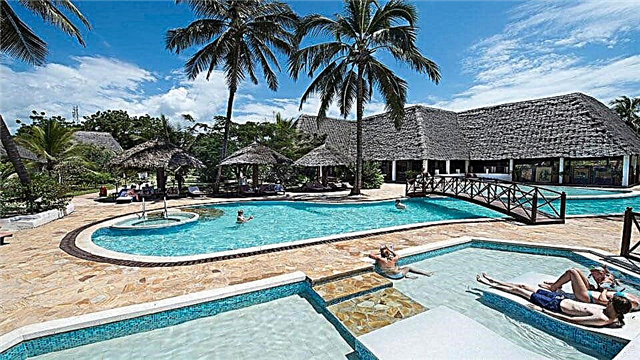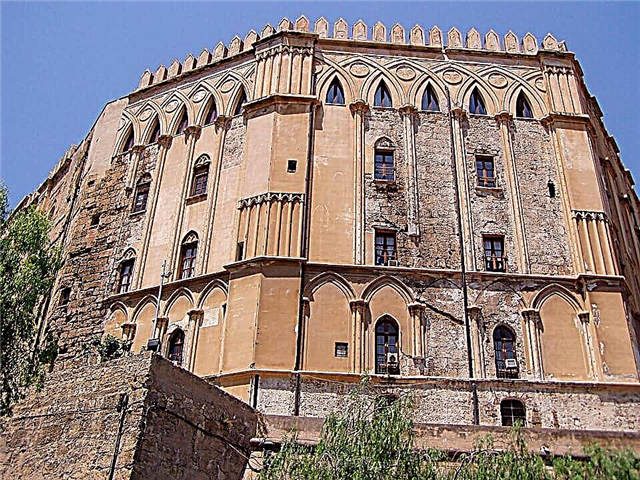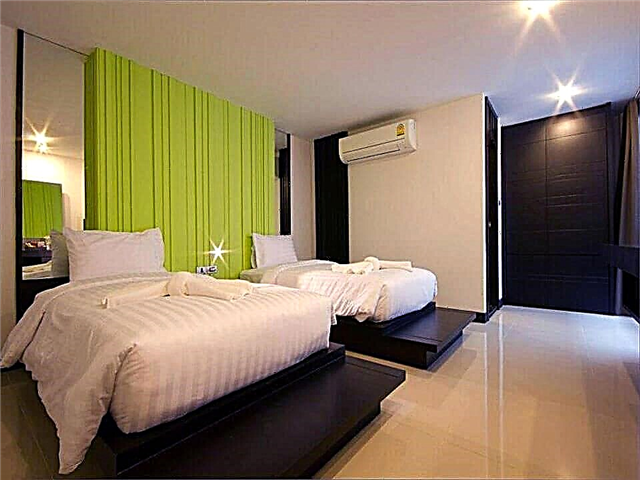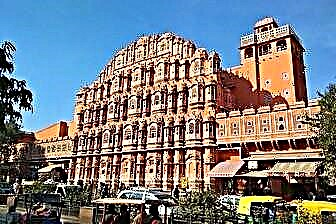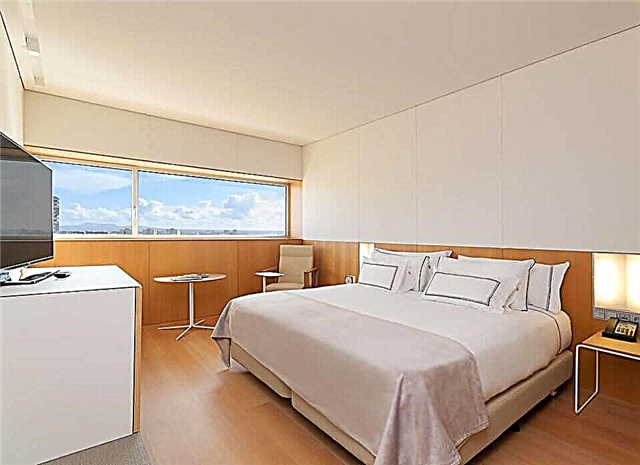Address: Moscow, Zubovsky Boulevard, 2
Foundation date: 1896 year
Coordinates: 55 ° 44'11.1 "N 37 ° 35'34.5" E
Content:
The museum dedicated to the main city of Russia has existed for over 120 years. It was created in 1896, but over the years the name and addresses have changed several times. Now it is one of the most famous museums in Moscow. People come here to take a fresh look at familiar streets, learn about famous residents, listen to interesting lectures and buy unusual souvenirs from young Moscow designers.

The complex of the Museum of Moscow on Zubovsky Boulevard from a bird's eye view
How the museum was created
At the end of the 19th century, Nizhny Novgorod hosted a representative industrial exhibition from different parts of Russia. When it ended, the pavilion dedicated to Moscow was transferred to its hometown. A museum was organized there, the exhibits of which told about all the achievements of Muscovites in the urban economy.
The museum, which was an advanced museum at that time, received many visitors - guests of Moscow, local historians and Muscovites who love history. After the revolution, it was renamed the communal museum and transferred to the Sukharev tower.
In the 1930s, the city underwent a major renovation. New squares and avenues were designed in the capital, and old buildings were to be demolished. A sad fate awaited the Sukharev Tower. The beautiful building was dismantled, and the collections were moved to a former church building in the center of the capital. In 1949 the museum received a new name - history and reconstruction, and in the mid-1980s the name was shortened to the Museum of the History of Moscow. In everyday life it is called even shorter - the Museum of Moscow.

Levei - well log house of the 15th century
Foundations
The buildings, which the museum has occupied for about ten years, were erected in 1835 by Fyodor Mikhailovich Shestakov according to the standard design of the architect Vasily Petrovich Stasov. They served as warehouses for the provisions of several military barracks. Today the premises are well restored and are used for permanent exhibitions and temporary exhibitions.
The museum contains about 1 million exhibits, most of which are of historical and cultural value. The museum received a significant part of the rare items from Moscow residents, historians, ethnographers, artists and collectors. Many finds were discovered by archaeologists during excavations in the city.
The pride of the museum is about three hundred family collections, telling about Moscow merchant families. These are materials about the merchants Bakhrushins, Vishnyakovs, Shelaputins and Syreishchikovs, who made a huge contribution to the development of the city.

There are many exhibits in the museum's funds dedicated to the development of the mosaic genre. Colorful tiles and stained-glass windows were used to decorate administrative buildings, temples, city hotels and metro stations. The mosaics are large in size, so they can only be seen during themed exhibitions.
The rare book fund includes 30 thousand items. These are old Bibles and Gospels, the first editions of V.N.Tatishchev and M.V. Lomonosov, a textbook on Magnitsky's arithmetic, which was published at the beginning of the 18th century, and other printed rarities. Museum staff carefully cherish books with autographs of famous writers, poets, historians, composers, actors and scientists.
Contemporary museum
Traveling through the museum halls is like a real adventure, with many unusual exhibits on display. Visitors spend a long time looking at the unique collection of themed headscarves produced before the revolution and during the Soviet era. Each of them is dedicated to an important event in the history of the city and the country - the 800th anniversary of Moscow, the 1950 Peace Congress and the 1980 Olympics.

The rich collection of porcelain and glass looks very picturesque. Painted ceramics and the finest objects were made at famous Russian factories owned by Yu. S. Nechaev-Maltsev, the Kornilov brothers, A. Popov and the M. Kuznetsov partnership. Of no less interest is a large collection of elegant figurines that tell about the life of ordinary townspeople and peasants, which were made at the plant of Franz Yakovlevich Gardner.
The USSR produced many goods related to Moscow. The name of the capital was given to perfumes, cosmetics and even household appliances. In the halls you can see rare items with Moscow symbols.
Connoisseurs of architecture are interested in carefully executed paintings and drawings created by the Russian artist Appolinarius Mikhailovich Vasnetsov. Thanks to him, we can find out how ancient towers and mansions that have not survived to this day looked like. It is curious that on the reverse side of his works, the talented author left detailed notes and talked about the topographic and local history features of the famous architectural monuments.

The halls of the museum display antique furniture, rare photographs of the city and its inhabitants, graphics, sculptures and paintings. Tourists linger for a long time near old cars, which at various times were produced at Moscow car factories. These are not only the familiar "Muscovites", but also foreign cars - "Ford" and "Studebaker", made at the beginning of the last century.
A separate section is devoted to Moscow schemes and maps. The oldest exhibit can amaze even the most sophisticated connoisseurs of Moscow history. This is Sigismund's plan, made in 1610. It depicts the central part of the city within the modern Garden Ring. The Latin text on the map says that Moscow is the capital of White Russia and one of the largest cities in Europe.
In the faleristics section, orders, medals and badges from different eras are exhibited. One of the rare exhibits is the militia cross, which was awarded to those who distinguished themselves in the war of 1812. Many awards are associated with the famous battles for Moscow.

Information for tourists
The doors of the museum are open on Tuesday, Wednesday and Friday through Sunday from 10:00 to 20:00, and on Thursday from 11:00 to 21:00, the Collections are housed in three buildings of the former Provision Warehouses. The first building is occupied by four exhibition halls.
The cash desks also work here. An adult ticket for one exhibition costs 200 rubles, a concessional ticket costs 100 rubles. A full ticket will cost 450 rubles, and a reduced one - 225 rubles. Admission is free for preschoolers. Discount tickets are sold to children 7-17 years old, large families with children, students, disabled people and pensioners (2018).
The second building of the museum is still being restored and is closed for tourists. The third building houses the information desk, the Children's Center and the gift shop. It sells paintings and colorful photo albums with views of the city, history books, memoirs of famous residents and a board game on the history of the capital. The second floor of the building houses a permanent exhibition on the history of Moscow, the Documentary Film Center, a lecture hall and the Proviant cafe.

Ford-T Phaeton (1914)
The spacious museum courtyard is used for holding mass celebrations, concerts, festivals, as well as screenings of documentaries in the open air. A separate building is occupied by an excursion center and a coffee shop.
Excursions
In order for residents and guests of the city to get to know the capital better, the museum offers educational excursions. They are held all year round. Tourists are shown the most interesting stations of the Moscow metro, they are told about the architecture of buildings on the square of three stations and the legendary skyscraper - the House on the Embankment.

ZIS 110 (1948)
Those who wish can visit excursions dedicated to the history of the Sandunovsky and Khludov baths, the cultural heritage of Fyodor Shekhtel and the medieval city. Trips to the Petrovsky Travel Palace and the Sokol artists' settlement are popular among visitors.
Educational programs
For children, the museum organizes special excursions, interactive classes, quests and intellectual games "Museum Investigation". One of the buildings houses the Children's Center. It has groups for modeling, dancing, calligraphy courses and a children's film school.Every Sunday the best chamber theaters of the city hold theatrical performances in the museum on the subjects of Russian history and folk tales.

Studebaker-Garford. Model 25 (1906)
How to get there
The main building is located at 2 Zubovsky Boulevard, within walking distance from the Park Kultury metro station. Three gates lead to the courtyard: two from the Garden Ring and one from the Ostozhenka side. All entrance gates are always open.



